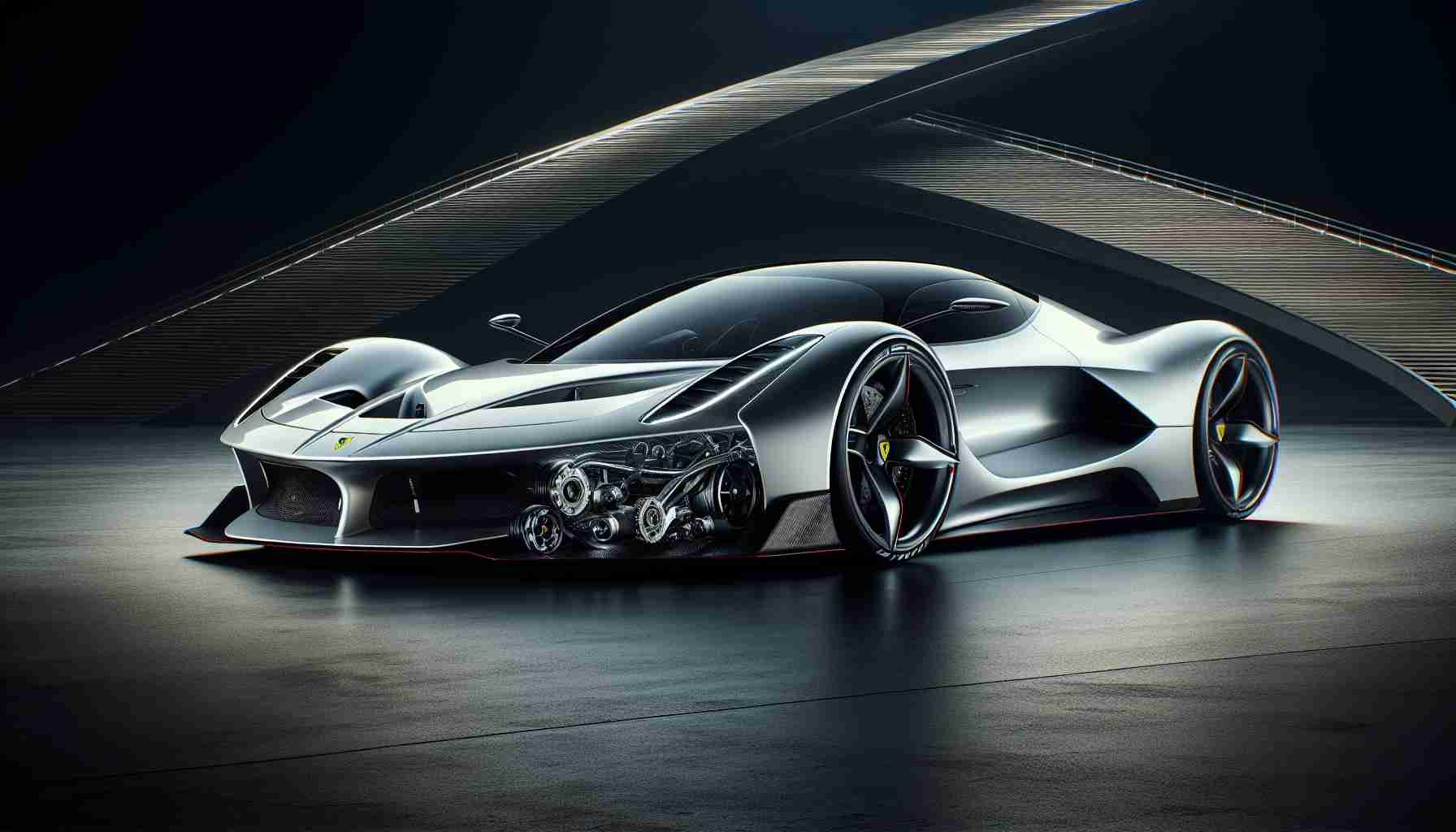Is the Prancing Horse Ready for an Electrifying Transformation?
Ferrari has experienced remarkable growth in recent years, with record sales and increasing revenues solidifying its status in the luxury automotive market. Nonetheless, 2025 looms as a significant date in the company’s history when it will unveil its very first fully electric vehicle. This ambitious pivot could either herald a thrilling new chapter for Ferrari or spell unprecedented challenges for the storied brand.
To align with modern environmental regulations, Ferrari is set to transition towards electrification. By 2030, the automaker aspires for its lineup to consist of 40% hybrids and 40% fully electric models, marking a significant shift away from traditional combustion engines. Internal discussions have acknowledged the potential pitfalls; failing to deliver desirable electric models may thwart the brand’s reputation for high performance.
The forthcoming electric Ferrari promises innovative technology and unparalleled racing sensations. Set to be crafted in the state-of-the-art Ferrari E-Building, this model will feature a meticulously engineered chassis designed to optimize weight and enhance performance.
Despite the optimistic outlook, the electric luxury automotive market remains volatile, with competitors like Maserati and Lamborghini grappling to establish their presence. Success for Ferrari could redefine its identity within the high-end electric market, but failure may force a reevaluation of its strategies. The upcoming Capital Markets Day in late 2025 will likely provide further insights into Ferrari’s electrification journey.
Ferrari’s Bold Electric Future: What to Expect and Trend Insights
Ferrari, a name synonymous with luxury and high performance, is on the brink of a significant transformation as it prepares to introduce its first fully electric vehicle (EV) by 2025. This move not only marks a shift in strategy but also highlights the evolving landscape of the automotive industry, where sustainability and electrification are becoming increasingly critical.
Innovations in Electric Performance
Ferrari is not just adopting electric technology; it is aiming to redefine it. The upcoming electric model will be produced in the Ferrari E-Building, a facility designed with cutting-edge technology to enhance manufacturing precision and innovation. The company is focusing on creating a lightweight chassis that leverages advanced materials like carbon fiber, which promises to optimize performance without compromising on the exhilarating driving experience that Ferrari is known for.
Specifications to Watch For
The fully electric Ferrari will likely feature:
– High-performance electric motors capable of delivering instant torque.
– Advanced battery technology, possibly including solid-state batteries, which offer faster charging times and longer range.
– Aerodynamic designs tuned for optimal efficiency and performance, blending classic Ferrari aesthetics with modern technology.
Market Trends and Competitor Analysis
As Ferrari embraces electrification, the luxury automotive market is experiencing a profound shift. Competitors such as Maserati and Lamborghini are also venturing into the realm of electric vehicles, setting the stage for a competitive landscape. According to market analysts, the luxury EV segment is expected to grow rapidly, driven by increasing consumer demand for sustainable options. By 2030, it is anticipated that electric vehicle sales will constitute over 30% of the total automotive market, paving the way for Ferraris of the future.
Sustainability and Environmental Impact
Ferrari’s pivot to electric models aligns with global shifts towards sustainability. By 2030, the company aims for 40% of its lineup to consist of hybrids and 40% fully electric models, a significant step in reducing its carbon footprint. This ambition reflects a broader trend within the industry as automakers prioritize environmental responsibility and compliance with stringent regulations.
Pros and Cons of Ferrari’s Electrification
Pros:
– Enhanced Performance: Electric motors provide immediate power delivery for an exhilarating driving experience.
– Sustainability: Helps reduce emissions and supports global environmental initiatives.
– Innovation Leadership: Positions Ferrari as a forward-thinking leader in the luxury automotive space.
Cons:
– Transition Challenges: Redefining brand identity while transitioning from traditional combustion engines can be difficult.
– Market Volatility: The luxury electric vehicle market is still developing, with uncertain demand trends.
Future Predictions
As Ferrari edges closer to its electrification milestone, industry experts predict a wave of innovation in electric supercars. The upcoming electric model is expected to generate substantial attention and could redefine performance benchmarks. By leveraging its storied heritage while embracing modern technology, Ferrari aims to maintain its status as a premier luxury brand.
Conclusion
Ferrari’s electrification journey is set to reshape the automotive landscape while reaffirming its commitment to excellence. With innovative technologies and a focus on sustainability, the iconic brand is poised to electrify not just its vehicles but also the expectations of its clientele. The upcoming Capital Markets Day in 2025 will be crucial in revealing further details about Ferrari’s strategy and ambitions moving forward.
For more insights on luxury automotive trends, visit Ferrari.













